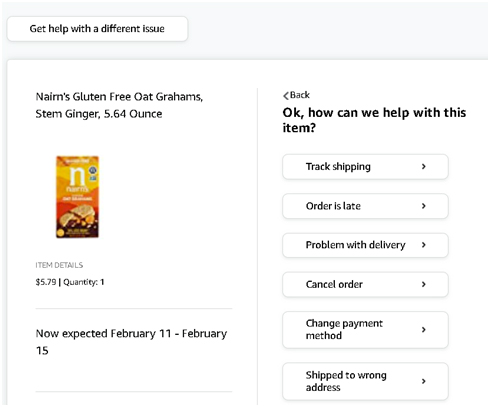An ERP implementation can be incredibly transformative for an organization and can help an organization improve processes and drive efficiency across the entire organization. However, ERP implementations can be costly and complex and can fail. The failure rates for ERP implementation according to Analyst firm Gartner is in the 55% to 75% range making them one of the hardest IT projects to achieve success with.
So why should an organization be doing an ERP implementation given the high risk of failure. Simply put, an ERP system backed with a good implementation can make an organization hum, allow all functions such as warehousing, inventory, procurement, finance, budgeting, Human Resources, retail, Ecommerce, manufacturing and planning to talk to each other and lead to better customer service. A few great examples of a great ERP implementations are Home Depot, Amazon, and Best Buy. These have been the foundation of success at these organization and have driven their better than average performance among their peers. What allows Amazon to dominate the ecommerce space is reliable inventory, fast shipping from the warehouse and integrated ecommerce and m-commerce that tells you at any time where you order is and when it will reach you. An Amazon bot can view your order status, give you an ETA, do a return or issue a refund without any human intervention since it is fully integrated to its ERP systems.

Similarly, when you walk into Home Depot, you can from the mobile app or its website tell where an item is in the store. The mobile app and web-commerce platforms talk to the ERP system to provide you a complete order history. It doesn’t matter if you purchased the item in-store, online or via the App – you can see all the orders in one place.
So, what can an organization do to ensure results that are more like these leaders versus the majority where the ERP budget is often exceeded, projects take longer than expected and the end-results are under-whelming. Here are our top 5 recommendations to deliver success for an ERP-driven digital transformation.
- Focus on delivering a great MVP1 and then Iterate: Too many organizations focus on getting all of it right and taking the time to ensure everything is perfect and everything works together. Getting that right has less than a 20% probability. It is much better to focus on a Minimum Viable Product1, deliver that successfully and then build from there. Between a project plan that has 90% of the functionality and will take 24 months to deliver and a project plan that has70% of the functionality and can be delivered than 6 months to deliver, we would recommend going with the shorter, lower functional carve-out. It goes without saying that a tight scope is the key here. Scope increases, customizations, throwing in more and more features are the death of a project. Home Depot took years of investment and iteration to get to where it got to. In their earlier MVPs they focused on just providing the store location for the product, then they brought in the mobile orders into the app, and then the ecommerce and mobile orders and finally integrated the in-store orders, mobile and ecommerce orders into one platform. If the goal had been to deliver everything in one-go the implementation would have been very expensive, taken extremely long and would have lost internal funding commitment within the organization. However, by delivering value to customer (showing where you can find a product in a store) they solved a huge customer problem in the early MVP iteration and then went on to tackle other problems and adding that scope in the future MVP iterations.
- Go Light on Documentation and heavy on system walkthroughs: Most ERP project managers are trained to go heavy on documentation. The reality is most people don’t read a 200-page document. Design Documents should be 1-3 pages long highlighting the salient points and the details are worked through in system design sessions iteratively. Today’s world changes so fast that overly complicated and elaborate design documents are going to be redundant in 1-2 years.
- Go End to End and involve multiple functions in System walkthroughs to be Customer Centric: Inject a sense of other functions in your teams. A warehouse team that doesn’t have the focus a customer service team has is going to miss the sensitivity that an end-customer wants tracking information at their fingertips, along with mobile notifications with a picture of the package delivered without having to call to check on order status. These innovations that lead to high customer satisfaction happen when all functions are customer centric. Is the Warehouse team thinking about the customer experience when designing the warehouse system, is procurement thinking about customer-delight while finalizing their processes and is the logistics team ensuring that they have backup in case a shipper cannot deliver to ensure the customer is not impacted?
- Ensure the project is staffed with a dedicated Team that makes up your best people: The best way to transform your organization is to take your best people and put them on this project and make this the only project while backfilling their roles with new hires to keep the lights on. This approach is very hard to fund and do when you embark on a 2-year ERP project but much more viable when you focus on a MVP approach with a 5-8 month timeline. Yet, organizations routinely make two mistakes when staffing ERP projects
- Put the best people and ask them to do their day jobs as well as the project: This is bound to cause frustration, friction and burn-out and the demands of the day job will delay the project and lead to its neglect and failure.
- Put the B-grade team on: Hmmm – we think it is fairly obvious but we will state it that aB-grade team – your less than best people, is going to have a less than best outcome. If this project is going to transform your organization, then have the best minds on it.
- Find change resistance by embedding the ERP implementation in the organization: Resistance to a new system is a major stumbling block. No matter how great the system, the resistance will always be there because it is not going to be as comfortable as the system the users know. Several organizations put in place Change Management initiatives to handle this resistance. First let’s talk about what everyone does for change management – they bring in a change manager, who begins a communication cadence that basically says – a new system is coming and keeps updating everyone on where the system is at. We fundamentally disagree with this approach. The best way to get buy-in is to get the project team engaged during the project implementation. Here is where the part-time works – it doesn’t work for the core team but does work for the early engagement of the extended organization. Outside of the dedicated core team that is your best people, get a broader team to sit through sessions such as conference room pilots and system walkthroughs for their inputs. It should be clear that they don’t decide the features that get in but allow them to be a voice to be heard and get them engaged invalidating and testing the system. Every bug they find gets them closer to buy-in as they now know the new system much better than a newsletter can do. The problem with the newsletter approach is that they tell you a great solution is coming and set expectations high. The benefit of engagement via system walkthroughs, testing and training is that people are hands-on, and they know exactly what they are getting. Also, there is the Ikea effect. If you got them to be part of building something, they are going to like it a lot more than something where they had no role to play.
To summarize to be in the 25% to 45% of organization that deliver success with an ERP implementation, focus on making sure the project size is not overwhelming, manage the scope tightly, follow an iterative approach versus a big-bang approach, focus on system walkthroughs and videos versus robust documentation, put the best people you have on the project and get a very large percentage of the organization exposed to it through training and testing the new solution.
Sandeep Walia is the President and CEO of Unify Dots. Manny Tanseco is the head of delivery at Unify Dots. Unify Dots is a leading ERP Cloud Software implementer specializing in the Microsoft Dynamics line of business application solutions including Finance, Supply Chain & Warehouse, Sales, Customer Service, Field Service, Human Resources, Manufacturing, Retail and Ecommerce Software.

















